Beyond Baroque in 1998
Twenty years ago, Beyond Baroque Literary Arts Center in Venice, California celebrated its 30th anniversary. Founded in a storefront on West Washington Blvd. by George Drury Smith as the headquarters for his nascent publishing project, Beyond Baroque magazine, the project had spawned a weekly poetry workshop, free and open to the public, that still meets on Wednesday evening, a reading series that has featured some of the most famous poets in the United States (Philip Levine, Mark Strand, John Ashbery, Amy Gerstler) as well as fiction writers, such as Charles Baxter. Under the direction of Alexandra Garrett, Beyond Baroque cultivated a superb library of small press publications, and it still operates a bookstore that can provide any young writer with a chance to peruse books not easily found at Barnes and Noble.
Beyond Baroque will be celebrating its 50th anniversary on November 10th with an extraordinary evening of featured artists, but before I write in this blog about this upcoming event, I first want to share with you some photographs I took of the evening on which poets recommitted themselves to this project. The president and artistic director of Beyond Baroque at that time, Fred Dewey, and I had come up with the idea of holding a brief pilgrimage to mark the 30th anniversary, and so we gathered at the Old Venice City Hall, lit some candles and walked up to West Washington, which now goes by the name of Abbott Kinney.
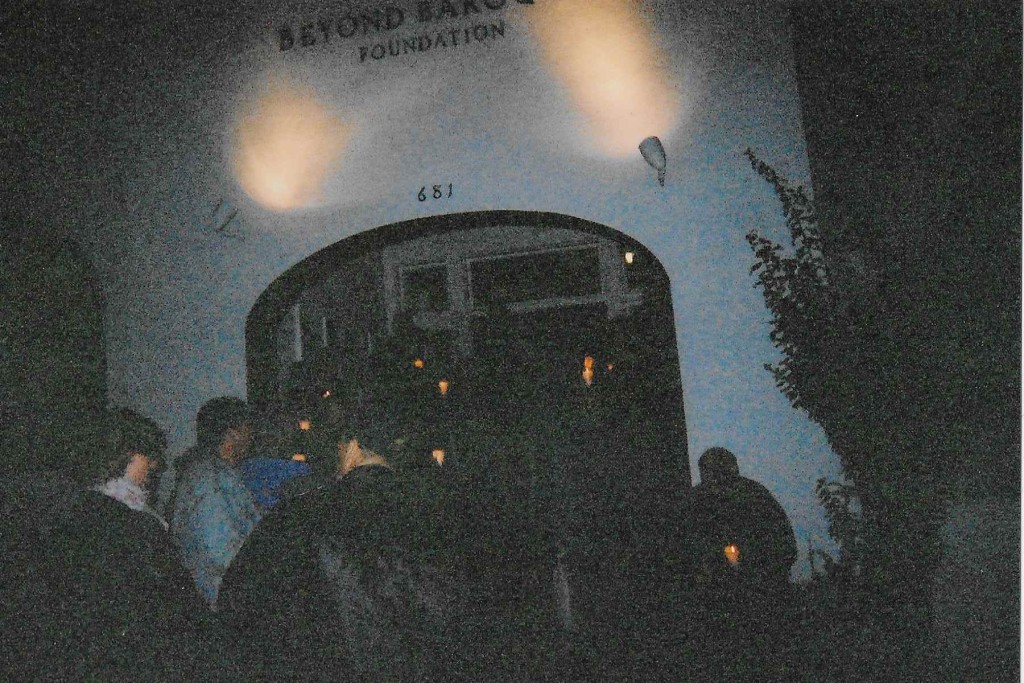
The storefront in which Beyond Baroque operated was the first floor of one of the taller buildings on West Washington. The lot to the south was empty and used only in a minimal manner as a boat building and repair lot; it is occupied by a popular specialty. restaurant, Lemonade. This first picture focuses on George Drury Smith, and it appears that he is gazing offstage at road taken, and retaken, mulling over the changes on Venice Blvd. as we made the 12 minute walk. Just over his shoulder is Harry Northup, and he is facing Frances Dean Smith, one of the first members of the Wednesday night poetry workshop, founded by John Harris and Joseph Hansen.
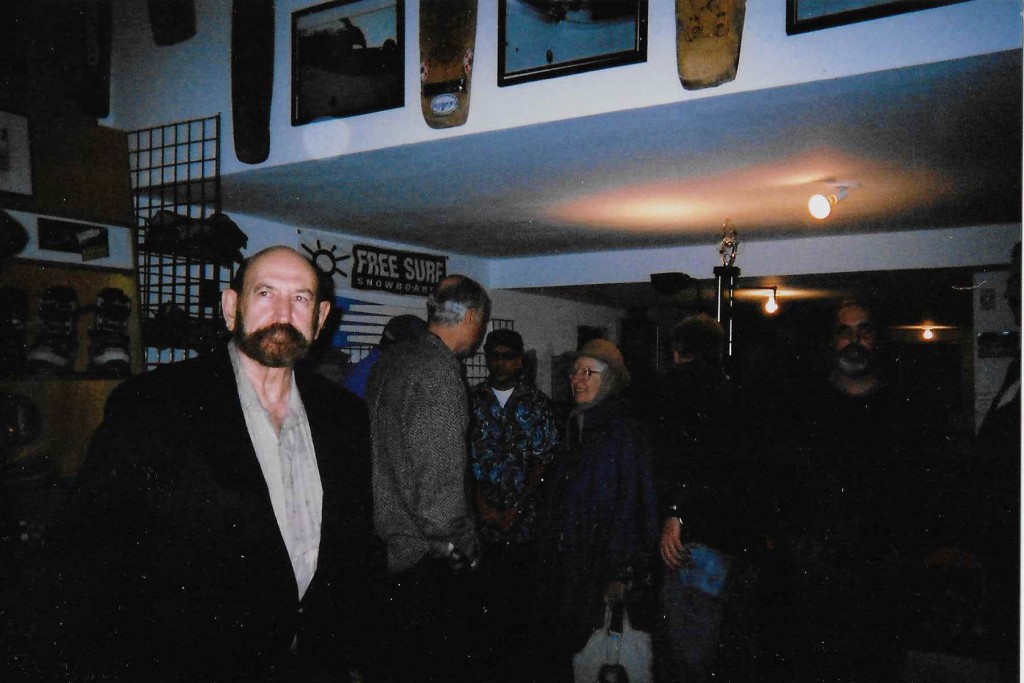
This next photograph features John Harris, wearing a blue cap; he is obviously enjoying the company of Barry Simons, who gave several memorable readings at The Bridge on the other side of town in the early 1970s; since Frances Dean Smith could hardly afford the services of a babysitter in the early to mid-1960s, she often brought her daughter, Marina Bukowski, to this very room to listen to poets who now regard Ellyn Maybe (dark hair, blue pullover), the only one of this quartet still alive, as a writer who has truly honored their legacy with her vivacious poetry.
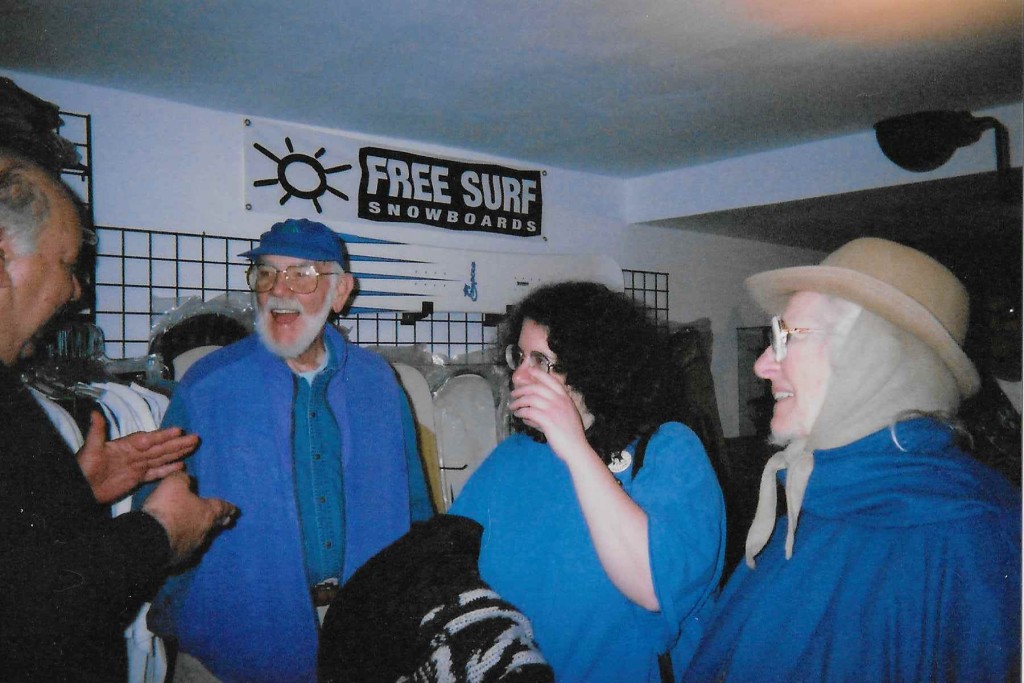
Holly Prado and Harry Northup, who met as a result of Harry reading FEASTS, the first major success I had with Momentum Press in the 1970s, are talking with George Drury Smith in the next photograph.
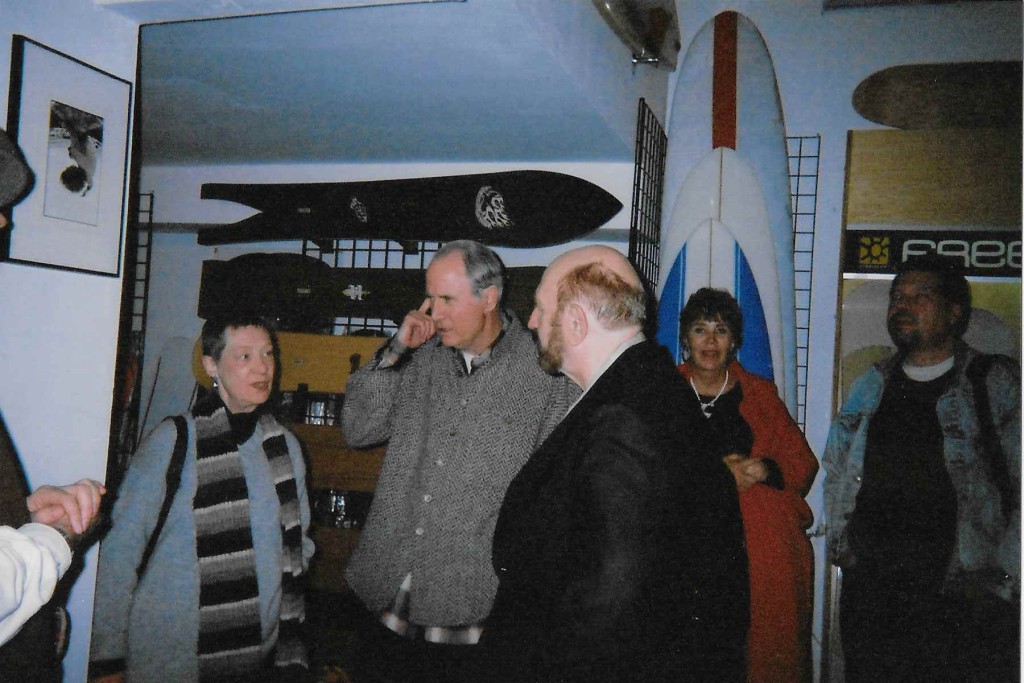
Ellyn and Frances again:
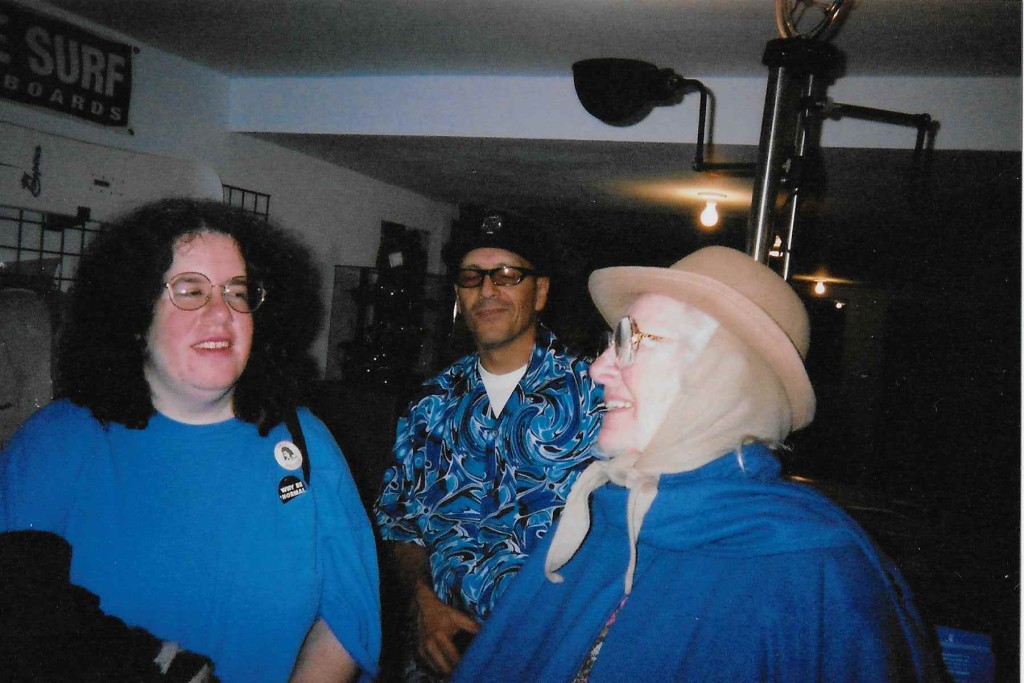
John Thomas and Philomene Long drove from the Old Venice City Hall to the original site. John Thomas’s eponymous first book of poem had an extraordinary influence on the first generation of Beyond Baroque workshop poets.
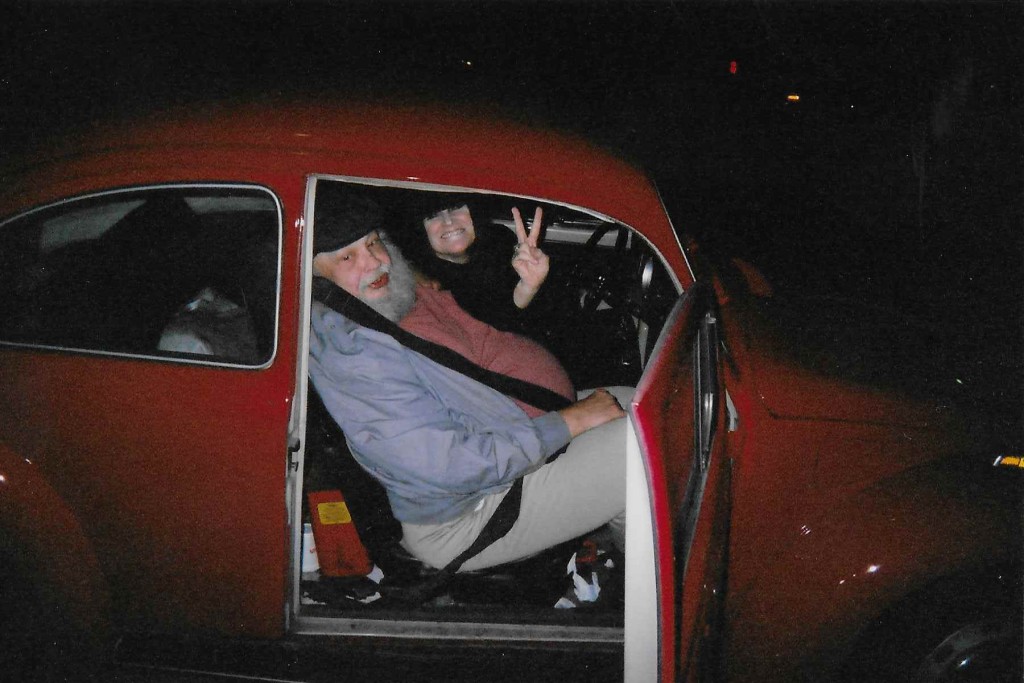
David James, on the far left, read his poems on a Friday evening in 1974 with me as the other featured poet. It must be said that David’s poems were far better received than mine were, as they should have been Although he eventually concentrated on film criticism, his poems are still a crucial contribution to my second anthology, “Poetry Loves Poetry” (1985).
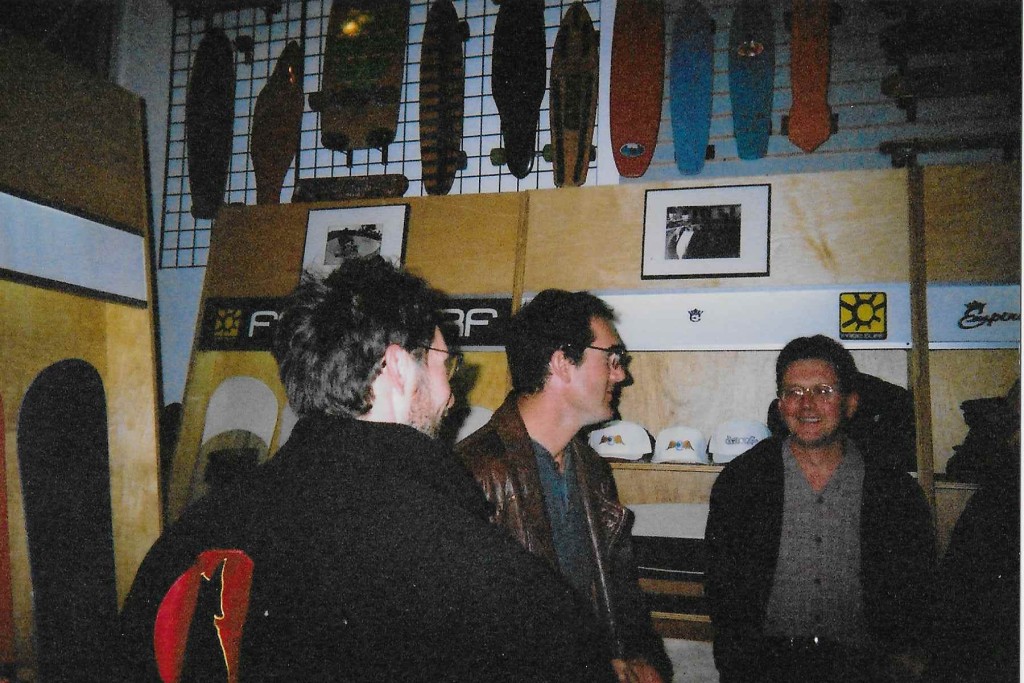
And now for some “cameo” photographs of other poets in attendance:
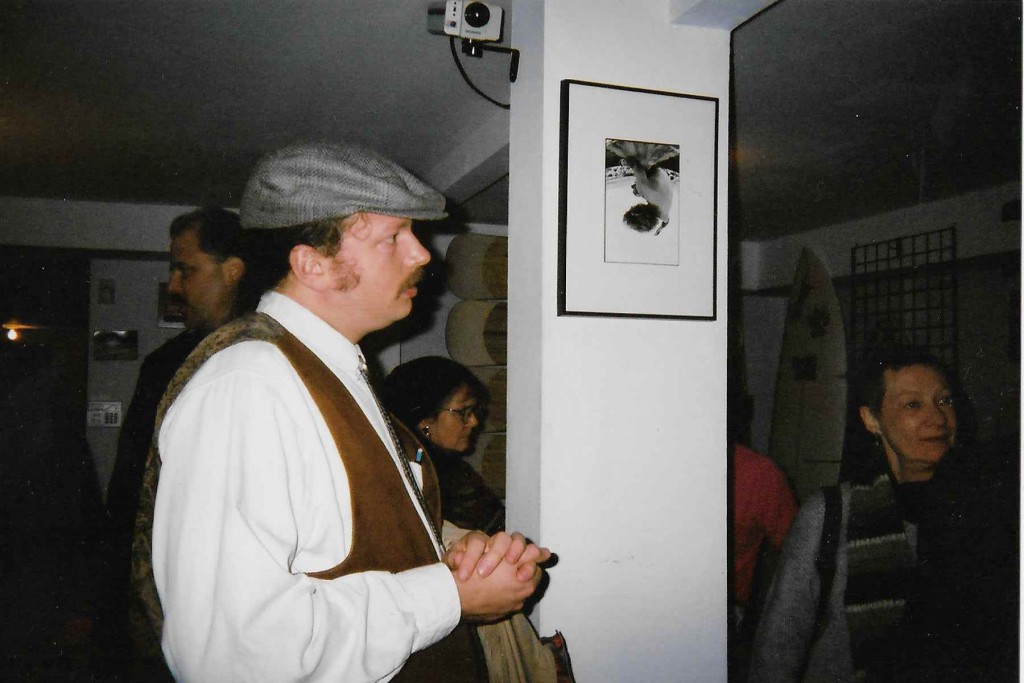
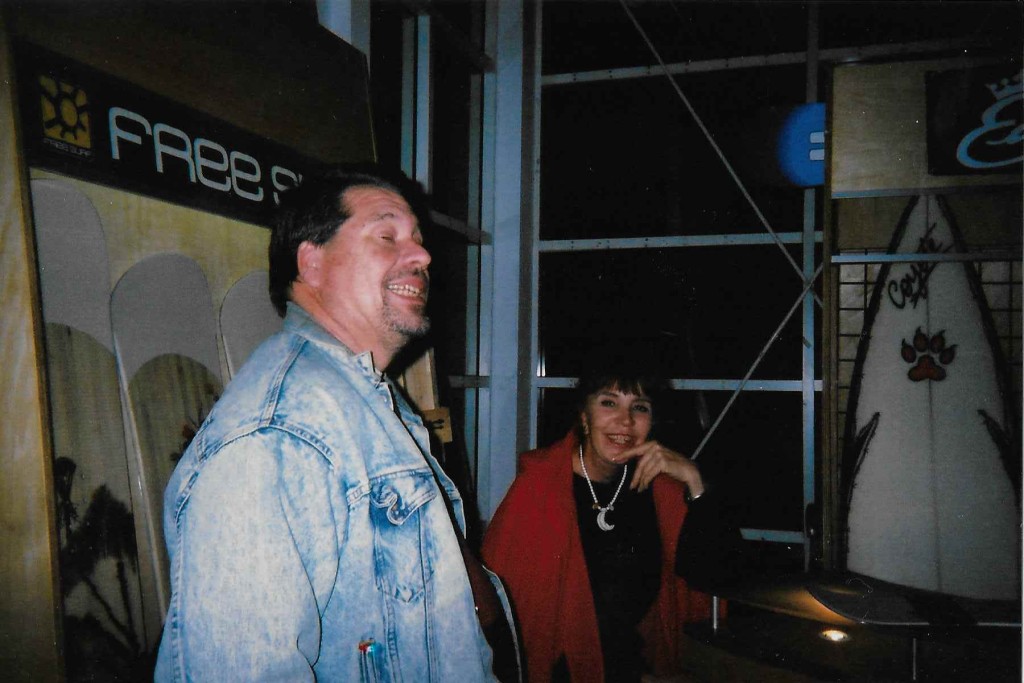
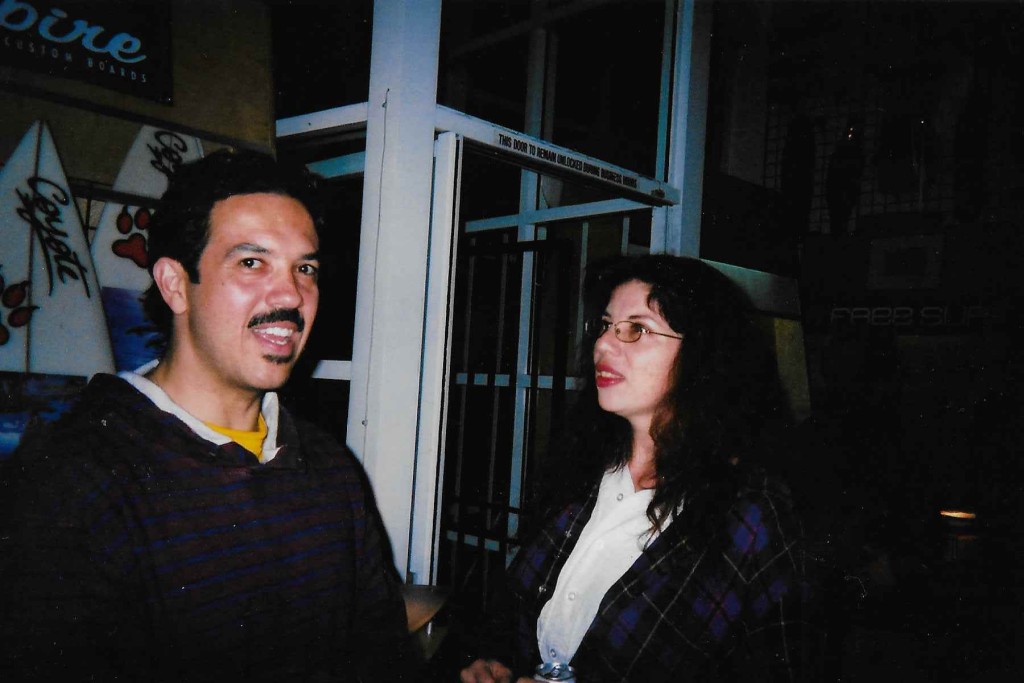
(All photographs (c) copyright Bill Mohr. Permission required to reproduce or disseminate these photographs in a form or medium.)
 About Bill Mohr
About Bill Mohr